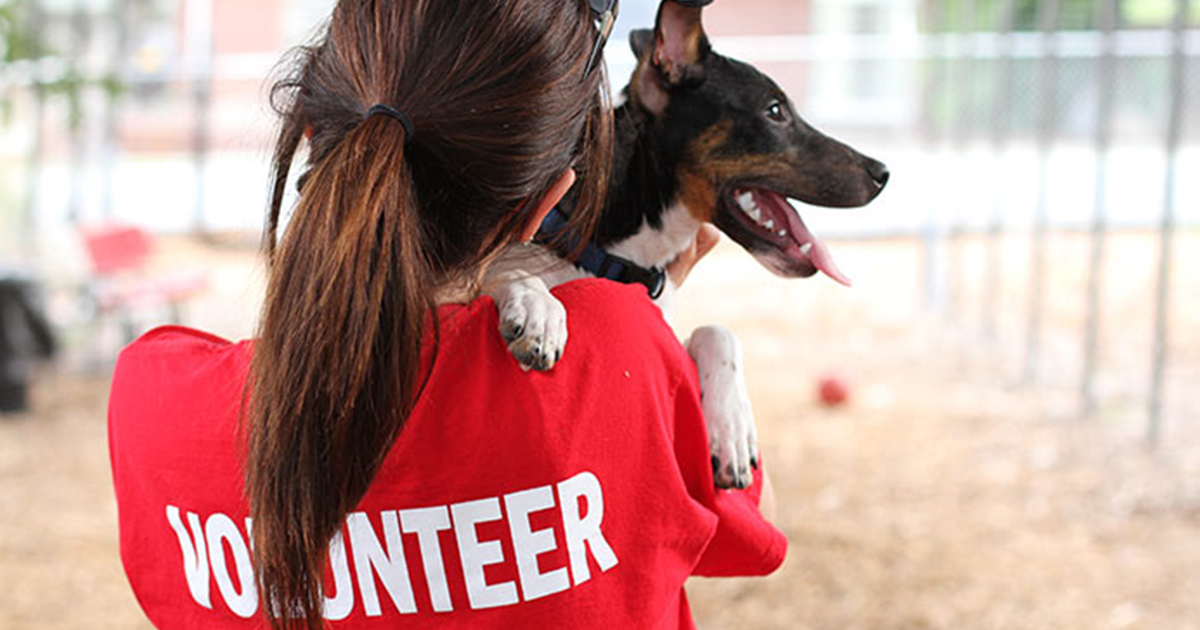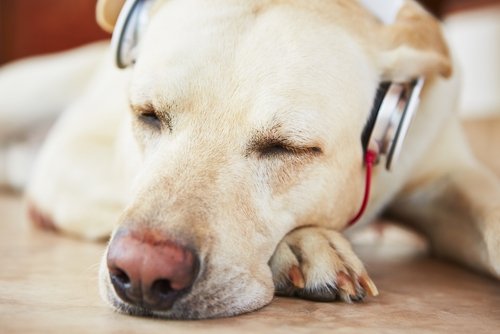If you’ve been a dog pet parent for any amount of time, you’ve probably seen your fur baby doing something quite perplexing and gross. In fact, your dog may choose to do this when there are visitors over to your home, or other inopportune or embarrassing times. It can also look quite funny and ridiculous. Do you know what we’re referring to?
Connect with a verified veterinarian in minutes. Licensed vets are available 24/7 to answer your questions. No need to worry about your furry family member.
Have you ever seen your dog scooting his rear end across a rug or carpet? Or have you seen him doing this out in the yard on the grass? Most dogs will do this at least once in a while, so it’s completely normal dog behavior. However, it can be really embarrassing. But there could be a good reason your canine companion is boot scooting across your living room carpet!
What Causes Dog Rubbing Bottom on the Floor?
While this can look funny or gross when your dog’s rubbing his rear across the floor, there may be a good reason for his actions. If you have some sympathy and wonder about dogs drag but on floor why, we’ve done the research and learned some of the uncomfortable causes that lead your dog to this drastic measure to find relief.
You may feel sorry for him, because your dog may have an itch he can’t reach, or another medical problem including:
- Excess fecal matter under his tail (pooh—can be more common in dogs that have long hair, or even in unclipped Poodles, Doodles, and more).
- Tapeworms
- Allergies
- Butt gland problems
Each of these medical conditions can cause your fur baby to rub his bottom across the carpet. The reason for your dog’s behavior is that he’s trying to relieve an itch, remove pooh, and more. In other words, your fur baby is uncomfortable and doing his best to relieve that discomfort.
Did you know that allergies can sometimes cause skin irritation, even on a dog’s rear end? The allergic reaction can be caused by:
- Medications your dog’s taking
- Pollen
- Fleas
- Food
- Mold spores
- Cigarette smoke
- And other environmental causes
The allergic reaction can cause problems on other parts of your dog’s body, too. You may notice your dog is scratching other parts of his body. Some allergic reactions may show up in your dog’s ears, in between his toes, and other areas of his skin. You may notice red, swollen areas on your dog, along with areas where’s he’s been biting to relieve the itch.
Pooh that’s stuck under your dog’s tail can also cause irritation and itching. The only way for your fur baby to try to get rid of this fecal material under his tail is to do the scoot. And if your dog has long hair, this can be a problem that develops quite often if the rear end isn’t kept clean and the fur kept clipped a little shorter. If the material isn’t removed, it can lead to an obstruction of the butt.
Tapeworms can also cause a dog to do the boot scoot. These parasites can be eaten by your dog if he eats something dead outside or he could be infected by a flea bite from a flea that carried the parasite. Yuck!
The reasons tapeworms cause a dog to scoot their rear across the floor is because the worms cause irritation when their segments reach the butt. The segments are small but can still cause irritation. You may notice these segments near your dog’s rear end. The tapeworm segments resemble white or golden bits of rice. Again, yuck!
Lastly, another common problem of a dog drag but on carpet is butt glands that are full. You may not even realize your dog has butt glands (also referred to as butt sacs). If not, don’t feel bad. You’re not alone!
Dogs have two butt sacs, one on each side of the butt. The glands contain oil and sweat glands, and they secrete a very strong fluid. If an butt sac becomes impacted (full), then a dog will do the boot scoot across a rug or out in the grass.
Because the fluid in the butt sac can be thicker in some dogs, the fluid isn’t able to pass to the outside. As a result, the sac becomes impacted, which can lead to an infection. At this point, a dog will have quite a bit of irritation and pain. If the condition isn’t treated right away, it can worsen, which could mean the dog may require surgery.
If your fur baby has this problem on a regular basis, you may need to help your dog empty these glands. However, do not attempt this if you’ve not done it before. Instead, ask the vet to show you how to do this in the correct away.
So, as you can see, your dog may have a worse problem than just an occasional itchy bottom! For this reason, if your fur baby is behaving this way on a regular basis, then it’s time to call the vet. However, there are some remedies you can try at home before calling the vet. However, if your dog seems to be in great discomfort, has an allergic reaction, or is in pain, then please call the vet. Don’t use the home remedies until after the vet has diagnosed the problem your fur baby’s having.
Home Remedies for Dog Scooting on His Rear
There are a few things you can try to help your dog stop boot scooting. You can try a home remedy for dog itchy bum. Actually, we’ve put together a short list of things that you can try. These are natural and can be done safely at home, as long as your dog isn’t in distress or having an allergic reaction.
1). Clip his fur: if your fur baby has a lot of fur under and around his tail end, then it’s a good idea to keep this fur cut shorter. We understand that a dog may not want this area clipped, but it will help keep fecal material from becoming stuck and hard there and could also keep the butt sacs from being impacted and infected. You can try cutting the fur in this area, or take your dog to a groomer for assistance.
2). Increase the fiber: you might ask the vet if adding more fiber to your dog’s diet could also help his scooting habit. Adding canned pumpkin (not the type for making pies), carrots, and more could help increase the fiber, making your dog’s stools pass more easily, without become stuck. In addition, this could also help empty the butt sacs. However, before making changes to your fur baby’s diet, it’s always a good idea to run the idea by the vet first.
3). Drinking more water: if your dog doesn’t drink enough water, this could cause fecal material to gather and stay stuck under his tail. Adding water would make it easier to pass the pooh, and keep the butt glands emptied. In addition, this can also keep the skin on your dog’s bum from becoming itchy and dry.
4). Using a warm compress: if your dog’s having an itchy problem, then you might try a warm compress soaked in warm, Epsom salt water. Some people say you should witch hazel instead of Epsom salts. But consider this, witch hazel is used as a facial astringent, which means this could be irritating or even cause more pain and itching. Opt for the Epsom salts, because this is more soothing, even for allergic skin.
5). Clean his bottom: another thing you can do is to clean any fecal material that may be stuck on your canine companion’s bottom. You may be able to tell this is the problem if your fur baby scoots across the carpet and leaves a brown stain behind. In this case, use a cloth dipped in warm water and remove the pooh a little at a time. Be careful if the pooh has become entangled in your dog’s fur. If this is the case, you may need to use a sharp pair of scissors to carefully remove the pooh. If your dog doesn’t want to stand still, you may need to ask someone to help hold the dog still while you trim away the fur and pooh. This isn’t a fun job, but it can help your canine companion to feel much better. And while you’re there, be sure to check for signs of fleas, tapeworms and other issues.
6). Help your dog loose weight: believe it or not, if your dog carries extra weight, this can also cause him problems. Losing weight can relieve some of the pressure on the butt sacs, and help your fur baby feel better.
7). Give your dog probiotics: another home remedy you can try is giving your dog probiotic supplements and treats made especially for dogs. These can help keep your dog regular, while also reducing pressure on the butt glands, and even help them empty regularly.
8). Exercise: this can also help your dog’s butt gland issues. Not only will he stay in better shape, but he’ll also pooh more regularly, and the exercise also helps to empty the butt sacs.
In the end, no pun intended (!), if your dog continues to have problems, is distressed, in pain or seems to have an allergy, then be sure to get him the vet as soon as possible. Otherwise, if your dog does the rear scoot only on an occasional basis, then chances are he’s just got an itch he’s trying to relieve! You’ll both be much happier if your fur baby doesn’t have to do the scoot across your expensive carpet!
Connect with a verified veterinarian in minutes. Licensed vets are available 24/7 to answer your questions. No need to worry about your furry family member.

Kim
Kim is a talented author, who loves animals especially dogs. She engaged in writing books and articles relating to animals a decade ago. Kim resides in Chicago with her husband and son. The family is the proud owner of a dog and a parrot (Jack and Lily). Kim wanted more than these two pets, but her husband put his foot down... She often visits elementary schools to talk to the kids about what she learned about pets and how they could learn from them.
Review symptoms, medications & behavior to keep your pets healthy with a Vet Online in just minutes.
Ask a Vet Live Now



